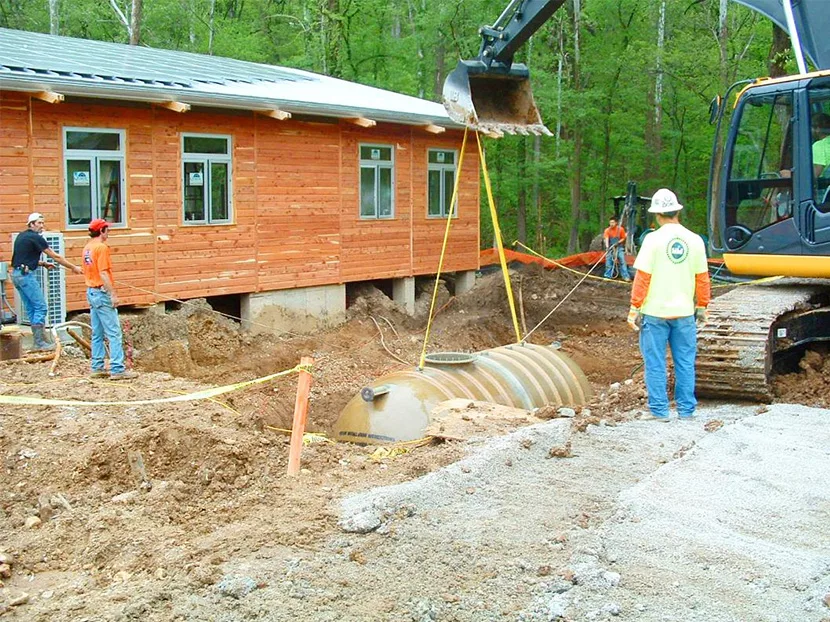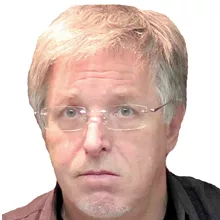The pressure on water resources across many areas in North America affects most of our population. It is leading to a resurgence of interest in technologies that prevent wasted water, difficulty with storm and sewage permits, and contamination of aquifers and local water bodies.
Can rainwater be used for drinking? Do waterless toilets stink? How can greywater be safely managed without using municipal systems? Are local authorities warming up to alternative approaches?
Stormwater and sewage systems are under stress, not just in cities but in smaller towns, too. The cost of modernizing infrastructure is a major budget issue for municipal governments. Last year, we reported that about 3,000 places in the U.S. have higher lead contamination in drinking water than Flint, Michigan (the infamous example), and more than 700 urban communities have crumbling sewer infrastructure in need of upgrading. The EPA says about 75,000 overflows send untreated sewage into American waterways every year.
Infrastructure and contamination are high on the list of problems and, of course, in many areas, water shortages also are demanding near-term solutions. The U.S. Government Accountability Office reports that 40 out of 50 state water managers are currently dealing with shortages or expect they will be in the next five years. Whereas capturing rainfall was once a charming throwback idea, primarily of interest to environmentalists, today it is serious business.
Although water challenges are increasing nationwide, they seem to be most acute in the west and southwest. Acceptance of responsibility and competence at managing water resources varies but, as mentioned, rules are tightening. Extreme weather seems to be more common and three or four million people are added to the population of North America each year, further stretching water assets already nearing a breaking point in some places.
Strict regulations are evolving around what you can dump into sewers, rivers, lakes and on land. Disposal is no longer a private matter for a landowner, especially if it’s managed incorrectly and hazardous substances drain into aquifers or local water bodies.
Not everyone may be doing a good job dealing with these issues, but some are, and I wanted to provide readers with some detailed examples. As a standard such as LEED becomes more mainstream, some might argue that it’s increasingly watered down or limited in its application. Another standard called the Living Building Challenge is like LEED on steroids. Several LBC projects are using modern water technology and are considered water-positive (similar to energy-positive or net-zero energy).
The phrase “modern water technology” is applied here to some equipment and processes that have been around for years, in one form or another, but are more refined or innovatively applied to meet modern-day challenges.
Seattle’s Bullitt Center
The Bullitt Center is a six-story commercial office building in downtown Seattle. As per LBC requirements, it harvests enough water to meet the needs of the building without violating the natural hydrology of the site, the water needs of neighbors or the ecosystem. These factors give the building at least a net-zero water balance.
Rainwater is collected in a cistern in the basement, filtered and passed through an ultra-violet disinfection system and then used in low-flow plumbing fixtures in bathroom sinks, showers and kitchenettes. Rainwater intended for foam-flush toilets and irrigation is filtered but not disinfected.
“Foam-flush toilets use about two tablespoons of water per flush,” says Mark Buehrer of 2020 Engineering in Bellingham, Washington, who designed the Bullitt Center water systems. He also worked on the IAPMO Green Plumbing & Mechanical Code Supplement of the Uniform Plumbing Code, the original LEED standard and the LBC. “Drip irrigation at the Bullitt Center is achieved using drip nozzles laid underground about 12 inches apart in a landscape area of about 6 feet by 40 feet. You are not allowed to spray greywater or reclaimed water (rainwater) above ground.”
Greywater from sink drains and showers, about 29,384 gallons per year, is collected in basement holding tanks. It is then pumped to a constructed wetland in the building’s third-floor green roof area, filtered by the bioswales and routed to the native soil below. An urban wastewater septic permit covers the greywater system, Buehrer says. He notes that city and state standards were influenced by the Bullitt Center project because when the design process began about five years ago, there wasn’t much on the books regarding rainwater, greywater and blackwater.
Although it’s an office building, the Bullitt Center includes showers but has no parking lot. Because of its urban location and environmental orientation, occupants are encouraged to travel to and from work by bicycle or public transit.
Basement composting units treat blackwater from the foam-flush toilets and waterless urinals. Foam-flush toilets use a mixture of biocompatible soap and water. Waste moves through a conventional 4-inch pipe to the composting tank. The foam mixture cleans the toilet bowl with each flush.
The composting units in the basement produce a dehydrated, condensed solid. Biosolids may be used as a nutrient-rich fertilizer. King County and the Bullitt Center have partnered to create a process by which the project can send its leachate to King County’s Carnation facility, where it will be filtered using natural processes and used to restore a native wetland.
Rainwater is collected in a cistern that holds about 52,000 gallons of water. “It’s enough for anywhere from a month to six weeks of drinking water for the building,” says Denis Hayes, director of the Bullitt Foundation. Hayes is a celebrated environmentalist: chair of the international Earth Day Network, senior fellow at the Worldwatch Institute and former director of the National Renewable Energy Laboratory.
“Treating potable water on-site will become important in many places just as it is in Seattle, which is a quickly growing city with an increasing population,” he says. “It’s getting hotter and there is less snowpack feeding our water bodies, so we depend heavily on two reservoirs already pressed to capacity. So, the best resource for us in the future is Mother Nature. Seawater from the Pacific evaporates and is deposited on our roof; we need to take advantage of that resource using the technology available to us.”
Once the rainwater is used and becomes greywater, it contains no heavy metals. If any infectious pathogen is found, the building’s green roof system removes it. Hayes’ team monitors the parts per million and the water returns to the natural cycle well below permissible levels.
The Bullitt Centre is energy-positive as well as water-positive. “We’re ahead by about 15 percent,” Hayes says. A geothermal system consisting of 26 wells drilled about 400 feet deep and five ground-source heat pumps provide heating and cooling for the building. Three heat pumps are used to heat or cool water circulated through the floor slabs, one conditions the outside air passing through a heat recovery ventilator and one is used exclusively for domestic hot water.
These pumps, lighting, computers and kitchen appliances use less electricity than is generated by the 244-kilowatt photovoltaic solar panel array on the roof consisting of 575 panels.
“Some things were done in this building that hadn’t been done before and some lessons were learned, so being water-positive and energy-positive did come at a premium cost of about 15 percent more than an average class A office building of this size,” Hayes notes. “But that premium is quickly disappearing as more buildings are designed this way.
“Climate change is real and has enormous implications for the survival of our species. We wanted to neutralize our impact on the environment. We hope it serves as an example of how we can use natural resources such as the rain and the sun healthfully and economically so others can see that heading down this path makes sense for a large number of buildings in the area.”
Tyson Living Learning Center, St. Louis
“We did an initial concept design for on-site rainwater treatment; at first they said, ‘You can’t do that,’” says Dan Hellmuth, principal architect at St. Louis-based Hellmuth Bicknese Architects. He’s talking about the Tyson Living Learning Center, a field station for Washington University in St. Louis. It employs some of the same technologies as the Bullitt Center and also is LBC-certified.
Hellmuth and his team met with the public works director and explained the science and technology.
“We got approval to submit the project under the Alternate Compliance path,” he notes. “The submission was successful and paved the way for future regional projects to use these same strategies. However, when we were under construction and the inspectors came in, we hit another wall. With patience, we set up another meeting and went through the explanation, finally obtaining the go-ahead.”
Rainwater is collected from the building’s roof and goes through a flush diverter to clear debris, then into a 3,000-gallon reservoir tank. From there it is disinfected with ultraviolet light and clarified by micron filters to render it potable. Greywater flows into a dosing tank and used for irrigation. Any water that’s not collected in the tank flows into a constructed stream-bed and rain garden.
The Tyson building also uses compost toilets; Hellmuth says they do not emit unpleasant smells. “This is aerobic, not anaerobic,” he explains. “It’s a different kind of bacteria and the process does not emit any odor. A small fan at the toilet-bowl level removes immediate odors and bugs. The sulphur smell from urine is eliminated because the urine filters through wood chips and is collected in a nitrogen stabilization tank. It’s sized to get us through the winter.”
This facility also uses solar, point-of-use water heating and heat pumps, and is recognized as water-positive, net-zero energy and net-zero carbon.
These projects show the combination of old rainwater systems with modern water safety and energy technology can help overcome the water challenges faced all over the continent. They also indicate that some solutions are new for everyone, including the individuals setting guidelines and issuing permits, so the technology needs to be carefully discussed to help clear regulatory roadblocks.
In some places, potable water and stormwater costs are increasing in the double digits every year. Projects are being cancelled only because a stormwater permit could not be issued. If these types of issues are not happening in your area, they may soon emerge. It might be time to look at some rainwater, greywater and blackwater case studies and get ready. Tomorrow might arrive sooner than we think.





